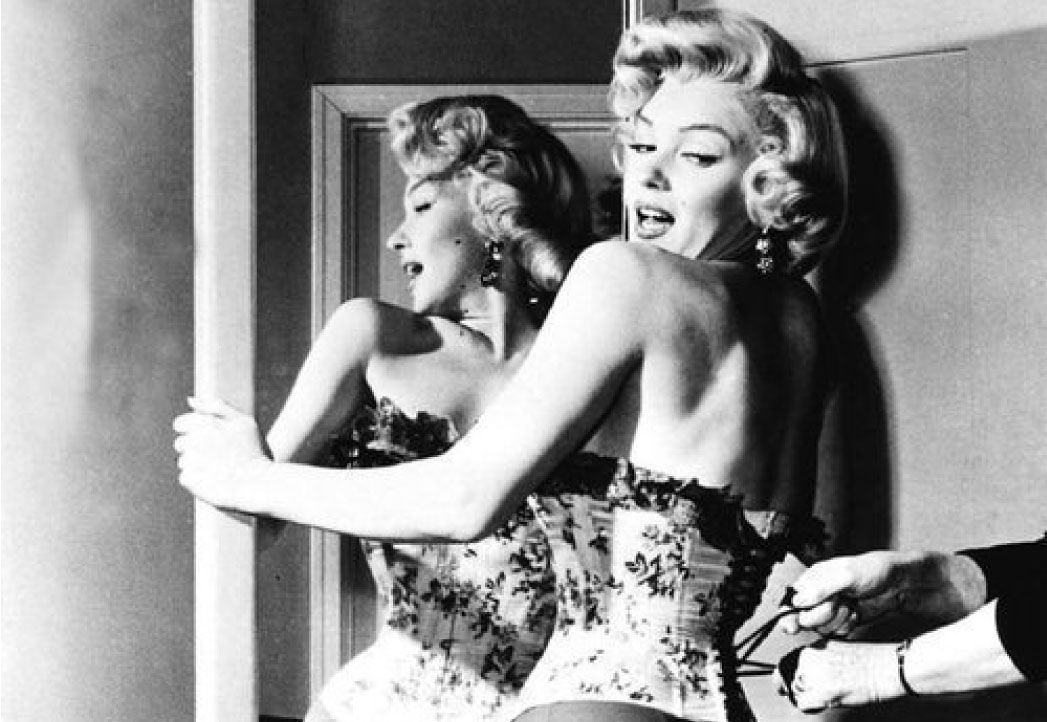Prošlu me subotu kolegica zamolila da joj vežem korzet i da ga stisnem koliko mogu, što sam ja sa guštom i učinila. Sjetilo me to na retro reklame za korzete koje su prije koji mjesec kružile netom i na moj plan da napišem nešto i o njima. Osobno volim korzete, iako ih ne nosim često kao prije.
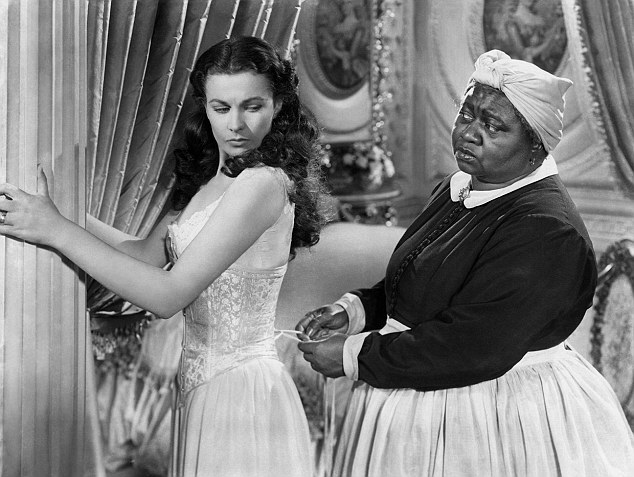
Jedna mi se anegdota urezala u sjećanje, spremala sam se na jednu od onih dosadnih predbožićnih veselica sa firmom, to je bilo prvi puta da smo moj dragi i ja išli kao par. To što smo novopečeni par nije sjelo nekim kolegicama, koje su bacile oko na njega. Od svih njih, on je baš odabrao čudnu informatičarku, sa čudnim smislom za modu i izgledom koji se ne uklapa u njihova mjerila ljepote. A ja, ja sam cvala od sreće, izgledala sam bolje nego ikad i obukla sam se u meni lijepu kombinaciju, na opće oduševljenje muškaraca, zabezeknutog mog dragog i zajedljivo grintanje ženskog dijela publike. Kombinacija se sastojala od crne uske suknje od satena koja je sa prednje strane imala vezanje nalik na onaj na korzetu, korzet od crne čipke sa rozom (nude) podlogom (na prvi pogled izgledalo je kao da je proziran), strukirani sako od satena, nude peep toe štikle sa vrtoglavo visokom petom, roza perlice oko vrata, crne čipkaste visoke rukavice i bob kovrčava frizura. Izgledala sam kao da sam ispala iz burlesque.
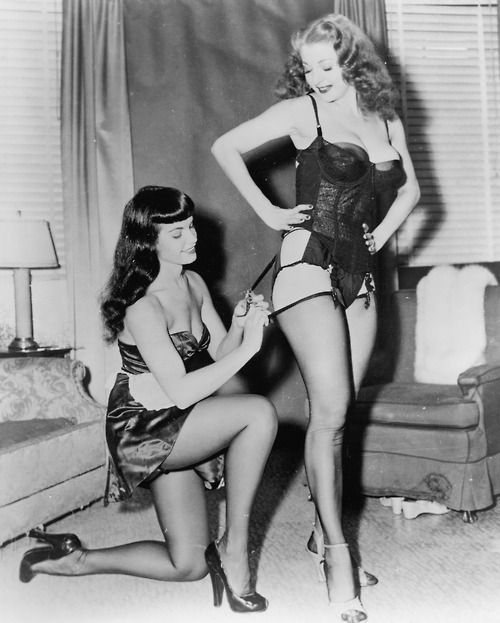
Zašto je korzet toliko moćan? Žena u njemu dobije oblik pješčanog sata, istakne obline, a osim samog izgleda žena je u njemu na neki način sputana, utegnuta i vezana, što kao i previsoke potpetice čine svoje u seksualnoj privlačnosti. Ipak ne gledaju sve žene na to isto. Korzeti su povijesni sinonim stezanja tijela. Pri spomenu korzeta, nekad je prva asocijacija, u doba stvaranja feminističkog pokreta, bila ugnjetavane žene. Kao da nije bilo dovoljno to što su im većinom bila uskraćena prava u kojima su muškarci uživali, još im je bio nametnut i taj zastrašujući odjevni predmet od kojeg su dame iz visokog društva padale u nesvijest. Oslobodile smo se korzeta i sada smo slobodne.

Što je pak sa željom da budemo vitke? Često se u ovo moderno doma ističe kako su nekad bile moderne punije žene, da su se slavile ženske obline i sl. Punije nije jednako kao debele. Pa zar nitko ne vidi da se i nekad od žene tražilo da bude vitka, da ima struk, da nema trbuh, da je skoro savršena? Slažem se, nije se slavio anoreksičan izgled današnjim manekenki, ali definitivno debele žene nisu ni tada bile pojam ljepote.
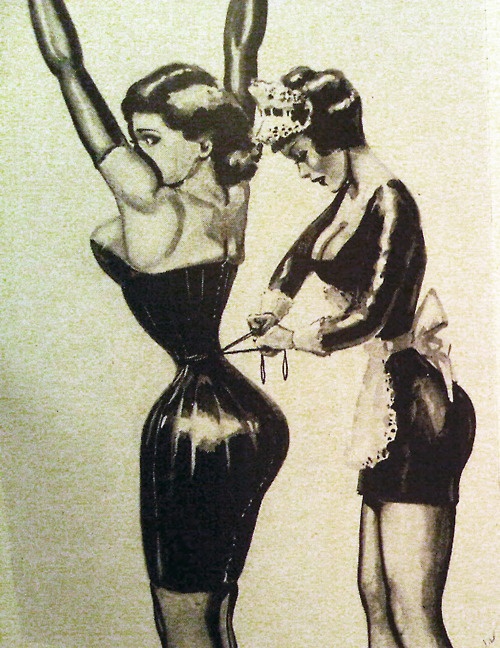
Pogledajte reklame za korzete ili pak bacite pogled na bilo koji film iz ’50-tih. Neki dan samo ponovno odgledala Matilyn Monroe u filmu „Gentelmen prefer blondes“ iz 1953, istaknuti struk, bokovi i grudi, linija,a ne debljina. Obzirom da pišem o modi, raspredanje misli o poželjnom izgledu ženskog tijela provlačiti će se neminovno još kroz moje tekstove, pa ću pustiti ove misli za sada na miru. Vratimo se malo na korzete.

Riječ korzet potječe iz starofrancuske riječi cors, što je umanjenica od riječi za tijelo, a dolazi od latinske riječi corpus, srodnog značenja. Korzet je odjevni predmet čija je svrha smanjivanje tijela stezanjem. Tijekom stoljeća, u različitim oblicima i sa različito svrhom (medicinska, estetska , fetiš) nosili su ga i žene i muškarci, ali je uglavnom odjevni predmet za žene. Korzeti se nose i danas, ali treba istaknuti kako su današnji korzeti mnogo blaža verzija korzeta iz povijesti. Korzet kao modni artikl nastao je iz želje i potrebe da se tijelo učini vitkijim. U tome je korzet oduvijek bio stvarni saveznik ljepote i ženstvenosti jer je damama osiguravao savršeno držanje, tanak struk i lijepo poprsje.
Povijest korzeta
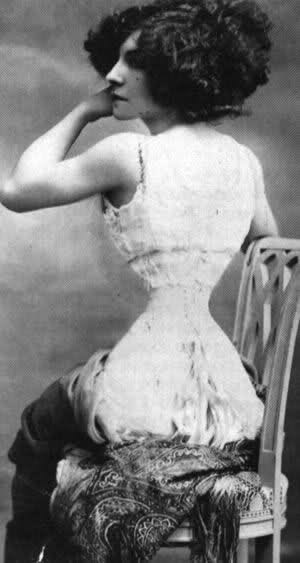
Prvi korzeti pojavili su se u 16. Stoljeću i bili su čunjastih i cilindričnih oblika i nosili su se na haljine sa prenaglašenim ramenima. Njihova je zadaća bila pritisnuti grudi.
Krajem 18. Stoljeća nosili su se kratki korzeti, koji su jedva sezali ispod grudi s ciljem podizanja i pridržavanja grudi.
Dolaskom viktorijanskog doba, korzet doživljava svoj procvat, a u upotrebi su dugački korzeti koji dižu grudi i stišću struk. Prvi puta u modu i kao ideal ženske ljepote ulazi pojam ženskog tijela u obliku pješčanog sata. U to vrijeme tanak je struk značio visok socijalni status.
Tad su se otprilike pojavili i prvi tightlaceri. Zbog izrazito lošeg utjecaja na zdravlje upravo su zbog ovog modela korzeti došli na loš glas, kao alternativa pojavili su se edvarijanski modeli, koj isu vršili puno manje pritiska na trbuh, ali je zato gurao torzo prema naprijed i time narušavao ravnotežu.
U 19 stoljeću figura pješčanog sata postaje popularna i kod muškaraca, te oni također nose korzete.
Zbog potreba za štednjom u 1. svjetskom ratu, žene su zamoljene da ne kupuju korzete, kojima je i bez toga opadala popularnost. Zbog ekonomskih i društvenih promjena nakon 1. svjetskog rata i relativno skorog 2. svjetskog rata, korzetima se ne vrća popularnost sve do pred kraj prošlog stoljeća. Korzeti su izašli iz mode 1920-ih kada su ih zamijenili grudnjaci, ali su preživjeli kao dio povijesnih kostima.
U svom početku korzet je bio odjevni predmet koji se nosio ispod haljina, a kako nekada tako i danas korzet se odijeva tako da se bilo na prednjoj strani ili leđima zateže vezivanjem ili kopča gumbićima ili kukicama. Korzete su izrađivali posebni majstori corsetieri od fleksibilnog materijala, uglavnom svile, pamuka i kože, koji su se fiksirali čvrstim dijelovima od drveta, čelika, riblje kosti, bjelokosti te kasnije plastike kao osnovom konstrukcije. U 19. stoljeću kostur se radio od čelika i riblje kosti, a danas se koriste plastika i čelik. Danas korzete možemo podijeliti na overbust korzete, koji sežu preko grudi i underbust korzete, koji sežu do ispod grudi.
Neki korzete positovječuju sa steznikom, no vjerujem da, kao i ja, pod svakim od ta dva pojma imate drugačiju sliku u glavi.
Povratak korzeta

Od klasične forme viktorijanskih haljina korzet je preživio do 20-tog stoljeća. U visoku modu ulazi na velika vrata ’40-tih godina prošlog stoljeća u Diorovim kreacijama. ’80-tih korzeti postaju popularni u gotičkoj subkulturi, gdje ostaju aktualni modni artikl do danas. Od tada korzeti se nekoliko puta vraćaju u modu i to obično smjerom od visoke mode prema modi za široke mase. Ta vraćanja u modu bila su fokusirana na korzet kao samostalni odjevni predmet.
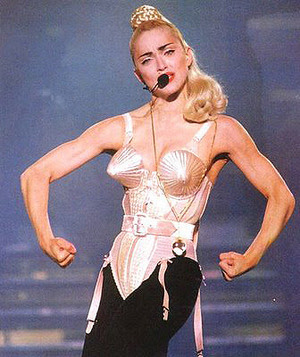
1990 godine, Jean Paul Gaultier je dizajnirao jedan od najpoznatijih korzeta modernog doba za Madonu, korzet sa šiljcima na grudima.
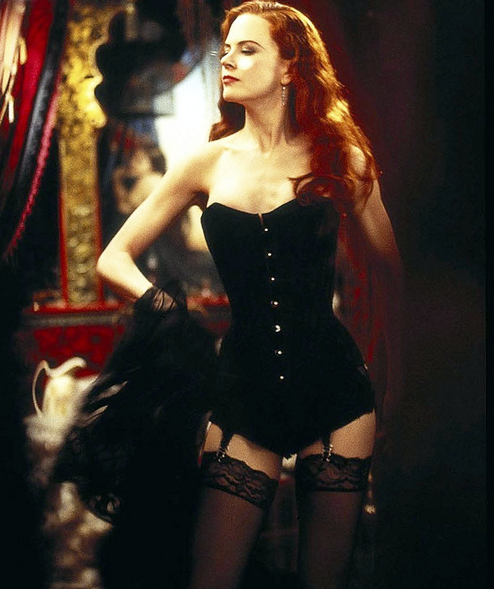
Film Moulin Rouge 2001. godine mnogo je pridonio povratku i popularnosti korzeta. Osim Nicole Kidman u tom filmu, u korzetima smo mogli vidjeti i neke druge zvijezde, kao št je Kylie Minogue, a neizostavni su
dio stila koji nosi Dita von Teese.
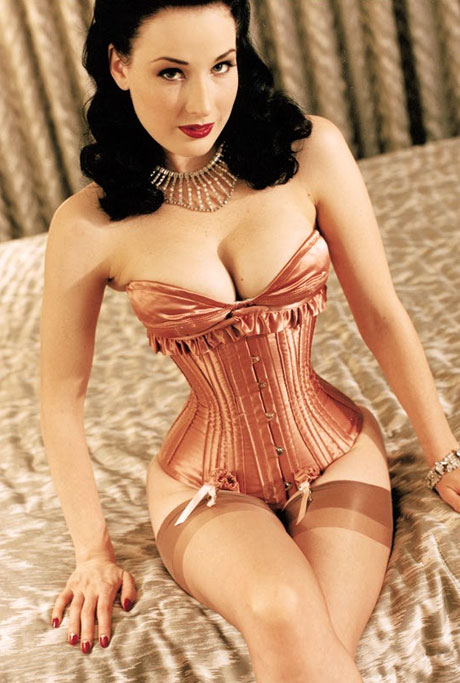
Da su korzeti nekim ljudima fetiš i ne treba posebno naglašavati. U BDSM-u bottom može nositi vrlo tijesno stegnut korzet koji će ograničavati kretnje, a top može nositi korzet iz estetskih razloga. Neke osobe (bez obzira na spol) mogu doživjeti seksualno uzbuđenje ili orgazam samim nošenjem čvrsto stegnutog korzeta.

CORSET -THIS BEAUTIFUL, UNCOMFORTABLE OBJECT OF DESIRE
One Saturday, a colleague asked me to tie her corset and to squeeze as much as I could, as I did with gusto. That reminded me of the retro advertisements for corsets that were circulating the Internet a few months ago as well as on my plan to write something about them. Personally, I love corsets, although I do not wear them as often as I used to.
One anecdote is stuck in my mind. I was going to one of those annoying pre-Christmas celebrations with my company, it was the first time that my partner and I went as a couple. Some of my colleagues did not like the fact that we were a new couple, because they fancied him. Of them all, he just chose a strange IT specialist, with a strange sense of fashion and appearance that does not fit into their criteria of beauty. And I, I was blossoming with luck. I looked better than ever and I wore what I considered a beautiful combination, to the delight of men, stunned expression of my partner, and a taunting grumbling by the female part of the audience. The combination consisted of a black, tight, satin skirt that on the front side had a tying similar to the one in the corset, a corset made of black lace with pink (almost nude) base (at the first glance it looked translucent), waist jacket made of satin, nude peep toe stilettos with sky- high heels, pink beads around the neck, long black lace gloves, and a curly bob hairstyle. I looked as if I had fallen out of a burlesque.
Why is the corset so powerful? The woman in it gets an hourglass shape, it highlights the curves, and apart from the looks itself, the woman in it is in a way constrained, strapped and bound, as excessively high heels contribute to sexual attraction. Yet not all women have the same opinion of it. Corsets are the historical synonym for drawing the body tight. When corsets are mentioned, back in the day the first association used to be, at the time of the creation of the feminist movement, that women were being oppressed. As if it were not enough that most were denied the rights enjoyed by men, they were forced to wear this frightening clothing item that made the ladies of the high society faint. We were liberated from the corset and now we were free.
What, in turn, is with the desire to be slim? Often in this modern age it is emphasized that fuller women were modern, that feminine curves were celebrated, etc. Fuller is not the same as fat. Doesn’t anybody realize that it used to be required of women to be slim, to have a waist that had a stomach that was almost perfect? I agree, the anorexic look of today’s models was not celebrated, but definitely not even then were fat women the epitome of beauty.
Look at advertisements for corsets or take a look at any movie from the 1950s. The other day, I watched again Marilyn Monroe in the movie “Gentelmen Prefer Blondes” from 1953. The waist, hips and breasts are emphasized, not the corpulence. Since I write about fashion, writing in depth about the desirable appearance of the female body will inevitably find its way into my texts, so I’ll skip writing about these thoughts for now. Let’s go back a little to the corsets.
The word corset is derived from the Old French word cors, a diminutive of the word body, and comes from the Latin word corpus, of a similar meaning. The corset is a garment intended to reduce body through tightening. Over the centuries, in different forms and with different purposes (medical, aesthetic, fetish) it was worn by both women and men, but has been mainly a garment for women. Corsets are worn today, but it should be noted that today’s corsets are a much milder version of the corsets worn back in the day. The corset as a fashion item arose from the desire and the need to make the body look slimmer. In that way the corset has always been a true ally of beauty and femininity as it provided the ladies with the perfect posture, a slim waist and a nice bust.
History of corsets
The first corsets appeared in the 16th century. They were conical and cylindrical in shape, and were worn on dresses with exaggerated shoulders. Their task was to press the breasts.
At the end of the 18th century short corsets were worn, which barely stretched beneath the breast to raise and adhere to the chest.
With the arrival of the Victorian era, the corset experienced a boom, and the long corsets that raise chest and squeeze your waistline started being used. For the first time ever, the notion of the female body in the shape of an hourglass entered the fashion also as an ideal of feminine beauty. At that time, a slim waist symbolized a high social status.
Then the first tightlacers appeared. Due to the extremely bad impact on the health, precisely this model contributed to the corsets’ bad reputation. As an alternative to this the Edwardian models emerged, which exercised a lot less pressure on the abdomen, but it pushed the torso forward and thereby infringed the balance.
In the 19th century, the hourglass figure became popular among men, and they also wore corsets.
Due to the need for savings during World War I, women were asked not to buy corsets, which is why it declined in popularity. Due to the economic and social changes after World War I and the relatively imminent World War II, corsets didn’t regain their popularity until the end of the last century. Corsets went out of fashion in the 1920s when they were replaced by brassieres, but survived as a part of the historical costumes.
In its beginning, the corset was an item of clothing that was worn under the dress, and as it used to be the case, but also today, the corset has been worn so that on the front or on the back it is tightened by binding or buttoning up, or by a buckle or hook. The corsets were made by special masters, corsetieres, from a flexible material, usually silk, cotton and leather, which were fixed by firm parts of wood, steel, fish bone, ivory, and later plastic as the base for the structure. In the 19th century the skeleton was made of steel and fish bones, and nowadays plastic and steel are used. Today, the corsets can be divided into overbust corsets, which stretch over her breasts, and underbust corsets, which reach just below the breasts.
Some corsets are equated with a stays, but I believe that you, as I do, under each of these two terms have a different picture in mind.
Return of the corset
From the classical form of the Victorian dresses, the corset has survived to the 20th century. It entered the high fashion big time in the 1940s through Dior’s creations. The 1980s corsets became popular in the Goth subculture, where they have remained a popular fashion item till today. Since then, the corsets have returned a few times into fashion, usually in the direction from high fashion to fashion for the masses. Those returns into fashion were focused on the corset as an independent item of clothing.
In 1990, Jean Paul Gaultier designed for Madonna one of the most popular corsets of the modern era, corset with spikes on the breasts.
In 2001 the movie Moulin Rouge contributed to the return of the popularity of the corset.
In addition to Nicole Kidman in that movie, we could see many other celebrities wearing a corset, such as Kylie Minogue, and they are an essential part of the style that Dita Von Teese wears.
The fact that some people have a fetish for corsets needs no emphasis. In BDSM, the bottom can be worn by a very tightly pinched corset that will restrict the movements, and the top can be worn by a corset for aesthetic reasons. Some people (regardless of gender) can experience sexual arousal or orgasm solely by wearing tightly clamped corsets.
DAS KORSETT, SO WUNDERSCHÖN, UNBEQUEM UND BEGEHREND
Meine Kollegin hat mich letzten Samstag gebeten, ihr das Korsett zu schnüren und es so stark wie möglich zu ziehen. Das habe ich so gerne gemacht. Ich erinnerte mich an eine Retro Werbung für Korsetts, die vor einpaar Monaten im Internet zu finden war und an meinen Plan, auch über sie etwas zu schreiben. Ich persönlich liebe Korsetts, trage sie aber nicht so oft wie früher.
An eine Anekdote erinnere ich mich besonders, ich habe mich für eine der langweiligen Weihnachtsfeier in der Firma vorbereitet, es war das erste Mal, dass mein Schatz und ich als Paar gegangen sind. Manchen Kolleginnen, die Blicke auf meinen Schatz geworfen haben, haben uns nicht gerne als ein Paar gesehen. Von allen hat er sich gerade für die eigenartige Informatikerin entschlossen, mit eigenartigem Modestil und einem Aussehen, das nicht ihren Schönheitsidealen entsprach. Und ich, ich war überglücklich, ich sah nie besser aus und habe eine für mich schöne Kombination angezogen, die Männer waren begeistert, mein Schatz war verblüfft und die Frauen bissig. Die Kombination war ein enger, schwarzer Satinrock, der an der Vorderseite eine dem Korsett ähnliche Schnürung hatte, Korsett aus schwarzer Spitze mit rosa (fast nude) Grundlage (auf den ersten Blick sah es durchsichtig aus), schwarzes enges Sakko aus Satin, nude Peep Toe Schuhe mit Schwindel erregenden Absätzen, rosa Perlen um den Hals, schwarze lange Handschuhe aus Spitze und lockige Bob Friseur. Ich sah aus, als ob ich aus der Burlesque-Zeit käme.
Warum ist das Korsett so imposant? Die Frau bekommt im Korsett die Form der Sanduhr, Kurven sind betont, außerdem ist die Frau in einer Art und Weise gebunden und gefesselt, was neben den sehr hohen Schuhabsätzen den Seks-Appeal steigert. Aber nicht alle Frauen sind gleich. Korsetts sind ein historisches Synonym für Einschnürung des Körpers. Korsetts waren in der Anfangszeit der feministischen Bewegungen die erste Assoziation für Unterdrückung der Frauen. Als ob es nicht gereicht hat, dass sie nicht dieselben Rechte hatten wie Männer, sie sollten auch noch dieses schreckliche Kleidungsstück tragen, dank welchem die Damen aus der Hochgesellschaft bewusstlos wurden. Wir haben uns von den Korsetts befreit uns sind jetzt frei.
Was ist aber mit dem Wunsch schlank zu sein? In dieser modernen Zeit wird oftmals betont, dass früher wohlgerundete Frauen sehr modern waren, dass weibliche Kurven bevorzugt wurden usw. Wohlgerundet bedeutet nicht dick. Merkt denn niemand, dass schon früher von der Frau erwartet wurde schlank zu sein, Taille zu haben, keinen Bauch zu haben, fast perfekt zu sein? Ich bin damit einverstanden, dass damals das Magersucht Aussehen der heutigen Modelle nicht populär war, aber dicke Frauen waren auch damals kein Begriff für Schönheit.
Schaut euch Werbungen für Korsetts oder irgendeinen Film aus den 50-er Jahren an. Ich habe mir vor einpaar Tagen wieder den Marilyn Monroe Film „Gentlemen prefer blondes“ aus dem Jahr 1953 angeschaut, betonte Taille, Hüfte und Brüste, Linie, nicht Dicke. Da ich über Mode schreibe, wird sich das Thema über gewünschte Körperideale einer Frau sicherlich auch weiter in meinen Texten finden, deshalb werde ich diese Gedanken jetzt mal lassen. Gehen wir auf die Korsetts zurück.


